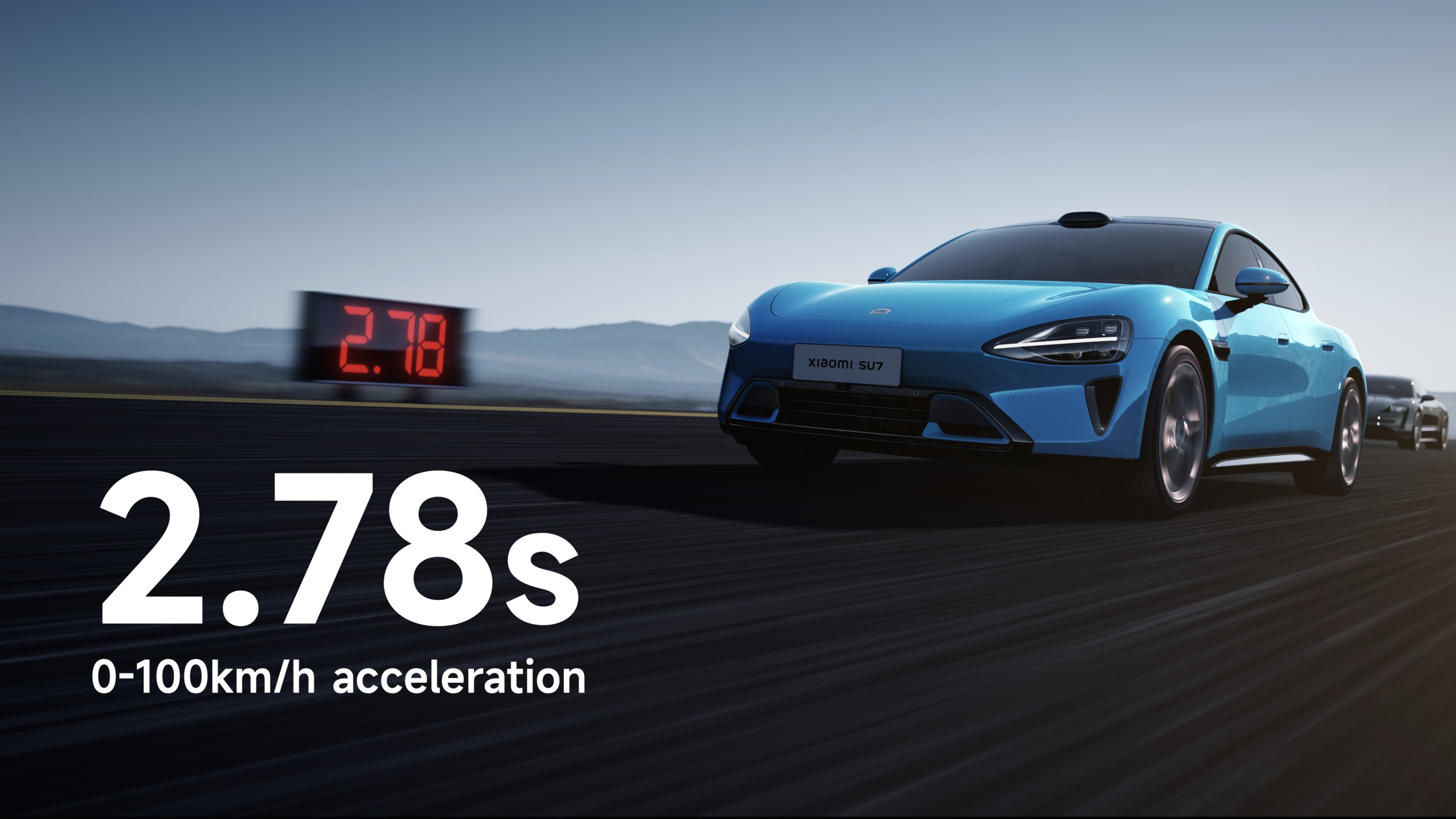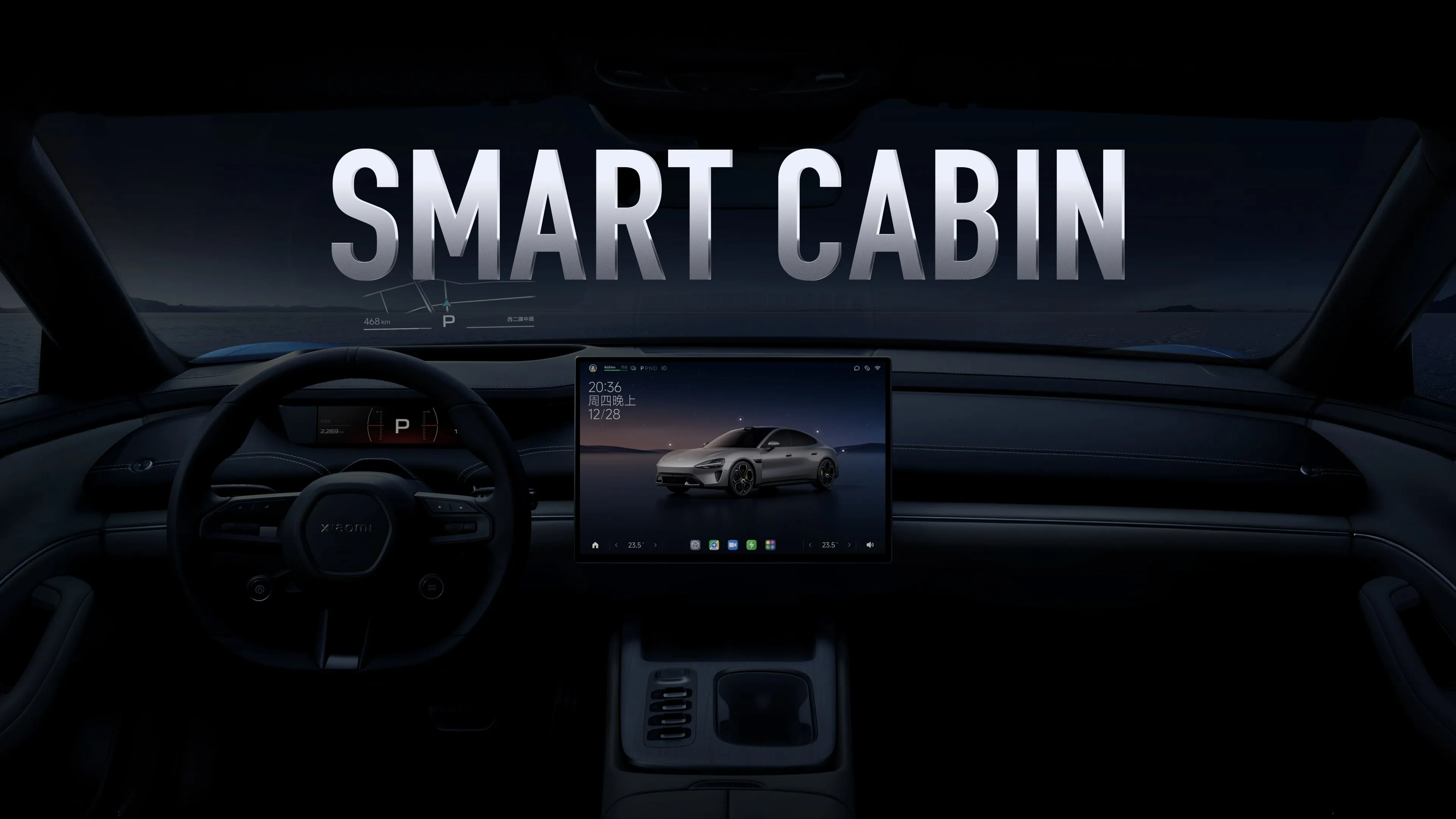Xiaomi has officially taken the wraps off the SU7, the company’s first electric vehicle, marking its debut in the fast-growing market. The ‘SU’ stands for ‘Speed Ultra’ alluding to the fact that the car can accelerate from 0-100kmph in merely 2.78 seconds – a hair faster than the Porsche Taycan Turbo S, which costs several times more than the expected price of the SU7.
But that’s only a sliver of what the car is capable of. The car runs HyperOS, meaning seamless connectivity with Xiaomi phones and accessories. Xiaomi also has lofty ambitions for its new division and plans to break into the top five automakers globally. Does the SU7 have what it takes to set Xiaomi on this path?
Specifics about Xiaomi SU7
While the SU7 is unlikely to launch outside China initially, its design would definitely stand out on Indian roads. Up front, the aggressive headlights seem to take inspiration from McLaren supercars like the 750S. The rear is distinguished by slender wraparound taillights joined by an LED light bar. Higher trim levels feature an active rear wing and lidar sensors. Its 19 and 20-inch wheels add to the sporty stance.

Inside, the SU7 brings a modern, minimalist look with a large central touchscreen and no visible buttons on the central console. Two interior themes will be offered at launch, while colour options are three – Aqua Blue, Mineral Gray, and Verdant Green.
Xiaomi is bringing some serious electric muscle with the SU7. The car comes in two variants – a rear-wheel drive model pushing 299 horses with a top speed of 210kph, and a dual-motor AWD beast packing over twice the power at 673hp and maxing out at 265kph.
Buyers can choose between two battery options – a cheaper lithium iron phosphate pack from BYD for base models, or a larger CATL battery for those seeking max range. Either way, this EV can juice up quick – adding 220km in just 5 minutes and a whopping 510km after 15 minutes at the plug.
The performance SU7 Max version takes things to another level. Its dual-motor AWD setup cranks out a massive 425kW with 838Nm of torque, rocketing from 0-100km/h in just 2.78 seconds. Top speed is set at 265kph, with 0-200kph coming in 10.67 seconds flat.
The SU7 also packs some serious tech like highway driving assists, self-driving features, and car summoning. This taps into inputs from 1 lidar, 3 radars, 11 HD cameras, and 12 ultrasonic sensors. City self-driving capability is planned down the road too.
The Xiaomi SU7 features the all-new HyperOS, Xiaomi’s own operating system that aims to bring interconnectivity across the company’s entire fleet of gadgets – and now cars. The OS should make pairing your devices with the SU7 a seamless process, more so if you’re rocking other Xiaomi gear. But Xiaomi CEO Lei Jun says even Apple products will play nice with the car.

The shared operating system with Xiaomi’s popular smartphones and gizmos also gives the SU7 an edge for techie drivers who want access to the company’s suite of mobile apps right from their car dashboard.
Official pricing remains unannounced but it’s still expected to undercut American rivals like Tesla. Jun also said the cost would “indeed be a bit high, but one that will have everyone will think is justified.” Meanwhile, deliveries to customers in China will start in February 2024. There’s no word on when the EV will make it out of China, if at all.
Does Xiaomi plan on launching more models?
The Xiaomi SU7 is being built under contract by longtime manufacturer BAIC in a Beijing factory capable of producing 200K vehicles annually. Four more models are reportedly in the pipeline, including an electric SUV due out in 2025.
Xiaomi has pledged to drop $10 Billion on its auto ambitions over the next decade, making it one of the few new players to get the green light from regulators in China’s crowded EV space. The market is currently wrestling with overcapacity and slowing demand that have led to cutthroat price wars among competitors.
The biggest obstacle for Xiaomi’s maiden EV voyage will likely come from BYD, which commands a lion’s share of China’s EV market, and Tesla, which holds about 9% market share based on recent figures.
How can Xiaomi outperform BYD?
While the back lights resemble Porsche and head lights are similar to that of Tesla’s the biggest competition that the debutant will receive is going to be from BYD; probably the most successful automobile brand in the country.
The rapid growth of BYD has seen the brand even Tesla in terms of quality, pricing and revenue for this year. China is 65% of BYD cars on the road right now. This exemplifies the trust that the Chinese withhold in the brand.

Since Xiaomi is making an EV for the first time; it will take a lot from the company to convince customers that SU7 is better than the likes of any car from BYD. This will lay the perfect foundation for Xiaomi’s next 4 models.
Not only does Xiaomi has to be better than BYD in terms of pricing, quality, design, power and every other thing associated with the specifics of the car; but the smartphone maker needs to have slick and sharp business strategies which will impact BYD’s sales.
BYD doesn’t have strong international policies with major exports being in other countries apart from any Asian countries. Xiaomi can exploit this by launching their flagship series in Asian countries and then going on to capture the world. However, it will command a lot from the company; can they outperform leading EV maker, BYD?












